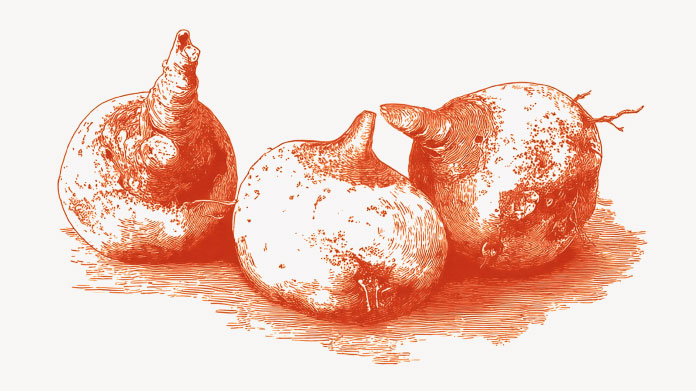
1. Eat better to stave off the urge to snack
When you get that ‘empty’ feeling between meals, it could be a sign of a lack of energy and nutrients. To prevent unhealthy cravings, nutritionists stress the importance of adopting a healthy balanced diet. A complete meal provides all the energy your body needs to function properly for several hours. By definition, a balanced meal should contain starch, protein, a dairy product as well as fruit and vegetables.
2. Don’t skip meals if you want to avoid cravings
Alongside a healthy, balanced diet, it’s also important to maintain a good eating ‘rhythm’. That means not skipping any of the three main meals of the day, particularly breakfast, the importance of which is often underestimated. A decent breakfast will provide energy and vitality throughout the morning, so you won’t feel the need to indulge in ‘elevenses’. On the other hand, it’s just as important not to ‘trade’ lunch– even if you eat it at your desk - for dinner!
3. Take your time when you eat to prevent post-meal ‘snack attacks’
The brain plays a key role in regulating feelings of hunger. In particular, it generates the desire to eat, as well as the satiety effect – the sensation you feel when you’re no longer hungry. However, it needs time to regulate hunger and satiety. When you eat a meal, it takes your brain at least 20 minutes to register that you’ve eaten enough. That’s why it’s important to take your time over eating, both to avoid consuming excessive amounts and to prevent the urge to snack after a meal.
4. Make sure you eat fibre to prolong the satiety effect
Apart from eating slowly, there are other ways of accelerating and prolonging the sensation of satiety. For example, you can opt for appetite-suppressing foods such as apples, grapefruit, almonds, oat bran or even locust bean gum. All these foods have a high fibre content which produces a natural hunger-curbing effect by either increasing the volume of the alimentary bolus or slowing down digestion in the small intestine.
5. Drink water to suppress the desire to eat
To make the most of the hunger-suppressing effects of dietary fibre, good hydration is essential. In fact, it’s worth knowing that there are two types of fibre – soluble and insoluble. Soluble fibre, such as the pectin in apples, forms a kind of gel when it comes into contact with water, which slows down digestion and prolongs the sensation of satiety. Insoluble fibre, such as hemicellulose found in oat bran or psyllium seeds, absorbs water and expands, thus increasing the volume of the alimentary bolus.
6. Plan for cravings to ‘avoid the worst’
If, in spite of all the above-mentioned advice, you still feel the urge to snack during the day, it’s a good idea to anticipate such cravings in order to avoid foods that are too sugary or fatty. Make sure you have a healthy snack available such as an apple or handful of almonds. You can also take advantage of slimming supplements such as Appetite Control Formula, which is formulated to control feelings of hunger and reduce appetite.
5 Days
The products I use are excel·lent
The products I use are excel·lent
ROSAS Josep Maria
13 Days
Delivery is prompt and I never saw a…
Delivery is prompt and I never saw a quality problem with the manufacturing. It is not possible to assess efficacy on a personal basis, since too many factors come into play. Efficacy can only be assessed statistically with a sufficient number of cases.
Roger De Backer
14 Days
I collaborates with the Supersmart…
I collaborates with the Supersmart more than 10 years. Every thing is going good. Quality of the things is good. Delivery comes in time. Five stars definitely !!!
Oleksiy
14 Days
All good
Simple, frictionless site, easy ordering, good delivery updates and execution.
Chris Robbins
16 Days
I feel better
I feel better
Peter Ammann
16 Days
Prompt delivery
Prompt delivery
JAKUB Radisch
17 Days
My new go-to for top quality supplements!
I am buying more and more of my supplements from this superb, high quality company. Cannot recommend it enough. Plus, excellent customer service with a quick, helpful team and speedy deliveries. Highly recommend Supersmart!
Cecilie H.
21 Days
SUPERSMART WHAT ELSE👍
SUPERSMART WHAT ELSE👍
DIEDERLE Christophe
24 Days
Excellent quality products with…
Excellent quality products with innovative formulas, as someone who has been suffering with acid reflux, these supplements have been lifesavers.
Oriana Moniz
24 Days
high quality supplement!
high quality supplement!
GALANT
25 Days
Good service prompt delivery
Good service prompt delivery
Mrs Marcella Reeves
29 Days
I like your clear explanation
I like your clear explanation. And how to make a choice of products for a specific health problem
Ingrid
36 Days
Great product and it arrives quickly.
Great product and it arrives quickly.
SOMMARIVA Gianni
37 Days
Excellent products and fast service.
Excellent products and fast service. What do we need more?
Margarida
41 Days
The variety of products is amazing
The variety of products is amazing, the offers are good and the sending is very fast. I just miss having a bit more of guidance about combinations, possible interactions, etc.
Maria Angeles Verdu





